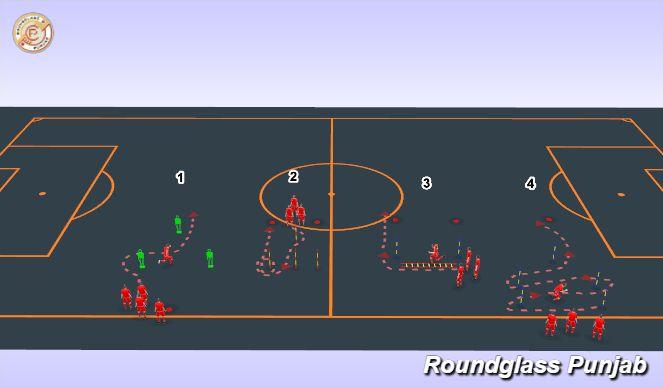A groundbreaking new study has shed light on the benefits of repeated sprint training in hypoxic conditions, revealing significant implications for athletic performance enhancement. Published in Frontiers, this multilevel meta-analysis synthesizes data from numerous trials to evaluate how low-oxygen training environments impact sprint capacity, endurance, and overall athletic output. As elite athletes and coaches continually seek cutting-edge methods to gain a competitive edge, the findings offer an important perspective on the effectiveness of hypoxia-based training protocols.
Repeated Sprint Training in Hypoxia Shows Promising Gains for Athletes
Repeated sprint training under hypoxic conditions has gained traction as an innovative strategy to boost athletic performance across various sports disciplines. By simulating high-altitude environments, this training method challenges athletes to sprint multiple times with brief recovery periods, pushing their cardiovascular and muscular systems beyond conventional limits. Recent studies compiled in a multilevel meta-analysis reveal that athletes engaging in this protocol show marked improvements in endurance, sprint capacity, and overall power output compared to traditional normoxic training.
Key performance metrics affected by hypoxic repeated sprint interventions include:
- Maximal oxygen uptake (VOâ‚‚max): Enhanced efficiency observed in oxygen utilization.
- Repeated sprint ability (RSA): Improved recovery between sprints and sustained high-velocity performance.
- Muscle buffering capacity: Increased tolerance to lactate accumulation, delaying fatigue.
| Parameter | Normoxia Training | Hypoxia Training | Percent Gain |
|---|---|---|---|
| VOâ‚‚max (ml/kg/min) | 52.3 | 56.1 | 7.3% |
| RSA Decline (%) | 15.8 | 10.4 | 34.1% |
| Lactate Threshold (mmol/L) | 4.1 | 4.7 | 14.6% |
Understanding the Physiological Impact of Hypoxic Sprint Sessions
Repeated sprint training under hypoxic conditions induces a unique set of physiological adaptations that bolster athletic performance beyond traditional training methods. Exposure to low oxygen levels during intense sprint efforts stimulates increased erythropoietin production, enhancing red blood cell volume and oxygen transport capacity. Additionally, hypoxia triggers metabolic shifts that favor greater mitochondrial efficiency and improved anaerobic energy utilization, crucial for sports requiring explosive bursts of speed. These adaptations collectively contribute to better muscle oxygenation and delay the onset of fatigue during high-intensity exercise.
Furthermore, hypoxic sprint sessions demand enhanced neural and muscular coordination, promoting increased motor unit recruitment and improved biomechanical efficiency. Athletes also demonstrate elevated buffering capacity against acidosis, enabling sustained sprint performance in oxygen-limited environments. The table below summarizes key physiological responses observed in athletes undergoing repeated sprint training at hypoxia compared to normoxia.
| Physiological Parameter | Normoxic Training | Hypoxic Sprint Training |
|---|---|---|
| Red Blood Cell Count | Baseline | +12% Increase |
| VO2max | Improved | Enhanced (+8%) |
| Muscle Buffering Capacity | Moderate | High |
| Neuromuscular Efficiency | Standard | Optimized |
Expert Recommendations for Integrating Hypoxia into Athletic Training Regimens
Integrating hypoxia into athletic training regimens demands a nuanced approach to maximize benefits while minimizing risks. Experts emphasize the significance of individualized protocols, considering each athlete’s adaptation ability and sport-specific demands. Training sessions should strategically alternate between hypoxic and normoxic environments, allowing sufficient recovery to prevent overtraining and hypoxia-induced fatigue. Additionally, the incorporation of repeated sprint training under hypoxia is recommended not as a standalone method but as a complementary component alongside traditional conditioning to enhance anaerobic capacity and speed endurance.
To effectively implement hypoxia, coaches are advised to focus on key parameters that influence adaptation, such as:
- Duration and intensity: Short, high-intensity sprints (10-30 seconds) followed by adequate rest intervals optimize oxygen deprivation without overwhelming the athlete.
- Frequency: Two to three hypoxic sprint sessions per week allow progressive adaptation without excessive strain.
- Monitoring: Regular assessment of physiological markers like oxygen saturation and heart rate variability ensures safety and guides program adjustments.
| Parameter | Recommended Range | Benefit |
|---|---|---|
| Sprint Duration | 10-30 seconds | Maximizes anaerobic stimulus |
| Rest Interval | 2-4 minutes | Optimizes recovery and performance |
| Session Frequency | 2-3 / week | Facilitates adaptation |
Key Takeaways
In summary, this multilevel meta-analysis sheds new light on the promising benefits of repeated sprint training in hypoxic conditions for enhancing athletic performance. By rigorously evaluating a wide range of studies, the research offers compelling evidence that training in low-oxygen environments can lead to measurable gains in speed, endurance, and overall fitness. As athletes and coaches continue to seek innovative methods to push the boundaries of human performance, these findings provide a valuable scientific foundation for integrating hypoxic sprint training into competitive preparation. Future research will no doubt explore how to optimize protocols and personalize approaches, but for now, the case for hypoxia-based sprint training is stronger than ever.





